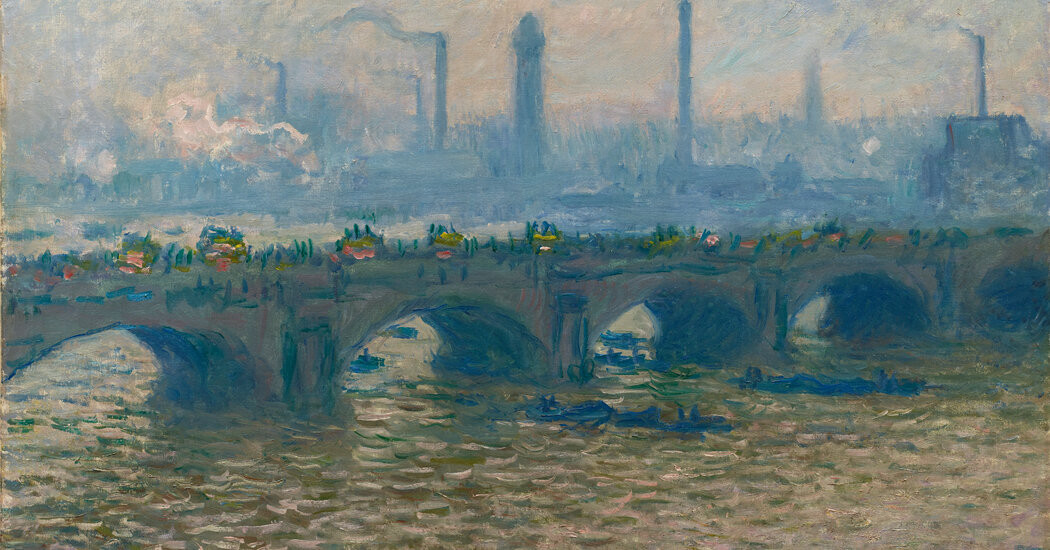

Monet and Turner found something sublime in the polluted 19th-century city — and maybe something darker, too.
If you’ve been to London recently (or ever) you’ll probably recognize Claude Monet’s description: “Today the weather was maddening, gusts of snow, then sunshine, fog and dark weather and clear, it was magnificent but all too changeable.”
Yet the French painter found London’s moody climate an inspiration, and he purposely came in only the colder months. During three visits from 1899 to 1901, he produced dozens of canvases of the city’s surging River Thames, 36 of which were shown to acclaim in Paris in 1904 but never exhibited in London.
One hundred and twenty years later, the Courtauld Gallery has brought a selection of the series home for the first time in “Monet and London: Views of the Thames” (through Jan. 19, 2025). The effect is as radiant and sublime as Monet might have hoped — though today we might see those unsettled skies in a different light.
“Every day I find London more beautiful to paint,” he wrote to his wife Alice from the swish Savoy Hotel, where he stayed on those visits. From his riverside balcony, the artist could observe the working waterway, chugging with boat traffic and steaming with trains on bridges above, from sunrise to sunset. Here, he would fulfill his enduring wish to “try to paint some fog effects on the Thames.”
At the Courtauld (less than half a mile from the Savoy), 21 canvases show the river in an atmospheric suite of cornflower blue, cobalt, dove gray and mauve. The choppy Thames glimmers in shades of silver and blue flecked with violet and pink, or flaming yellow, orange and crimson from the sun — “the little red ball,” Monet called it — that’s high above in a sky thick with “delicious fog.” “The extraordinary fog so very yellow,” he wrote, characterized the industrialized late-19th-century London. Locals already called it “the Big Smoke.”



